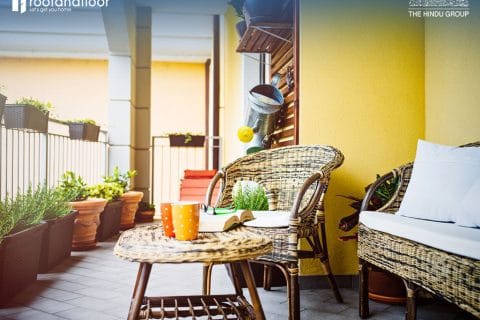In India, the diversity in languages is only matched by the variety in architectural styles across the country. In the Ravi river valley of Chamba district in Himachal Pradesh, the homes are built in a unique style referred to as Thathara. Nearly 400 years old, this ancient construction technique was initially used in the building of palaces and mansions. Later, the style began to be used in construction of homes.
Being a hilly terrain, the houses were built keeping sloping ground in mind. For steep slopes, the land was made usable by building a gravity-retaining wall of stone masonry and the home was built on top of this. In case of gentler slopes, a cut-and-fill technique was used to create a lower level where cattle were stored and then a higher level which could be used by the owners. Each house is an independent structure separated from the other homes by a fair distance.
Plan and Structure
The Thathara homes generally have a rectangular plan. They have two or three storeys with a verandah in the front of the top storeys. Windows were usually small openings in order to protect the inhabitants from harsh weather conditions. Rooms were partitioned using masonry or timber.
Foundation for these homes was made from stones without the use of mortar. The entire structure was upheld using Tholas (vertical load-bearing columns) and wooden beams. The Tholas were made of stones and Thatharas (planks or logs of wood). Tholas were provided at the corners or ridges of the structure to support horizontal beams which bore the weight of the rafters. Walls of these homes were usually made of rubble or adobe. The upper storeys generally utilized wooden planks as partition material, roof covering and framework so that the load was reduced.
Lifestyle
Thathara homes were built to house small or medium sized families. At the maximum, they usually had 10 inhabitants each. The lowest storey was used as space for cattle. On the first storey, there was a verandah beyond which the large space was used as a living room. The highest floor housed the kitchen. Smoke from cooking escaped through gaps in the wooden planks, thereby leaving the rest of the home unaffected. Initially, Thathara homes did not include bathrooms or restrooms – a corner of the kitchen with drainage was used instead. However, now restrooms are built as a separate unit away from the main house.
Then and Now
With the passage of time, this construction style has undergone some changes. Since the ban on felling trees, there has been a scarcity of wood. The houses are, therefore, built with materials that are available. For instance, sloping roofs were earlier covered with wooden planks but now thin slates are used for roof cladding. The spaces are also being enlarged by closing up the verandahs with walls and wooden frames. What were small openings for ventilation have now become larger windows and doors for greater comfort.





